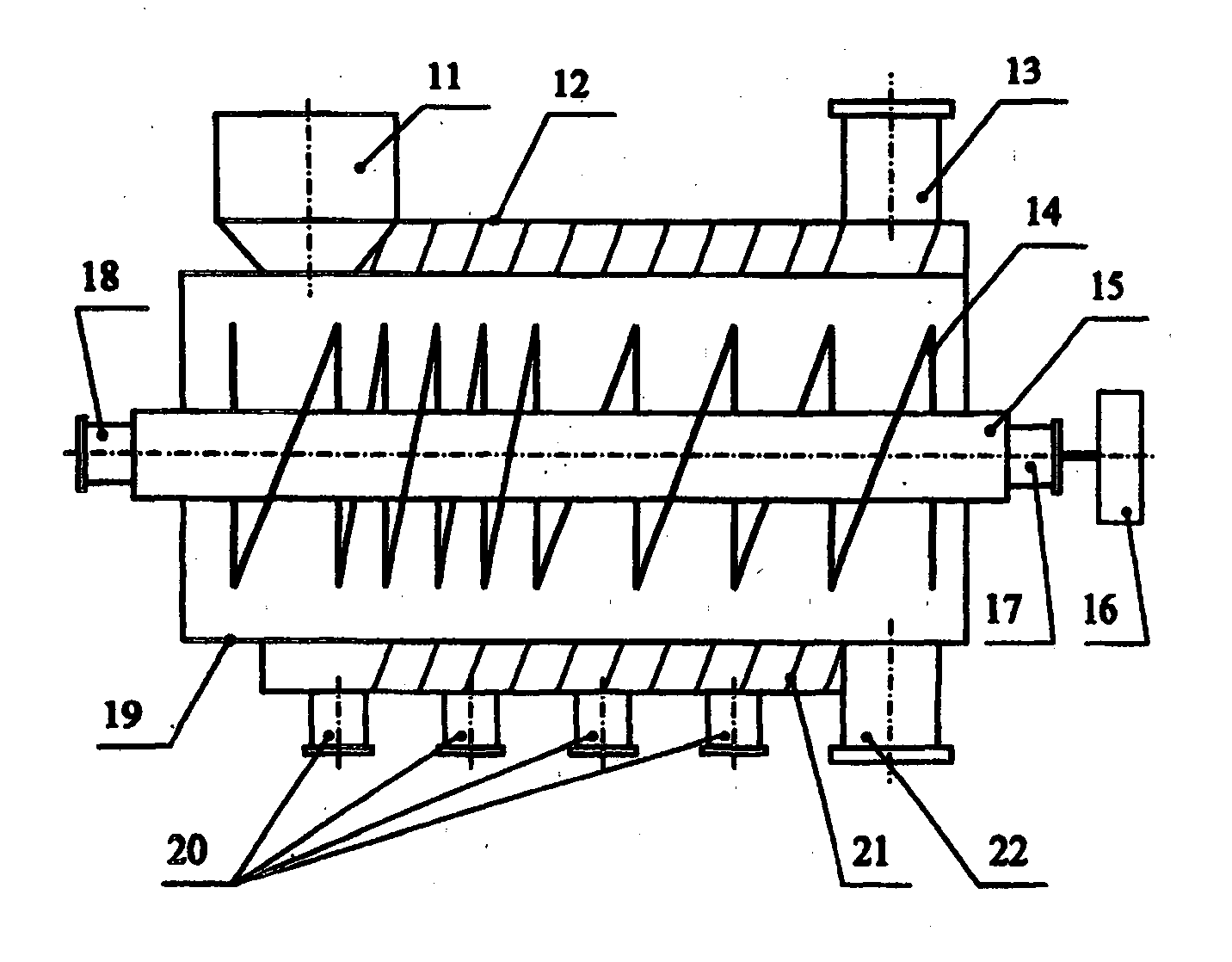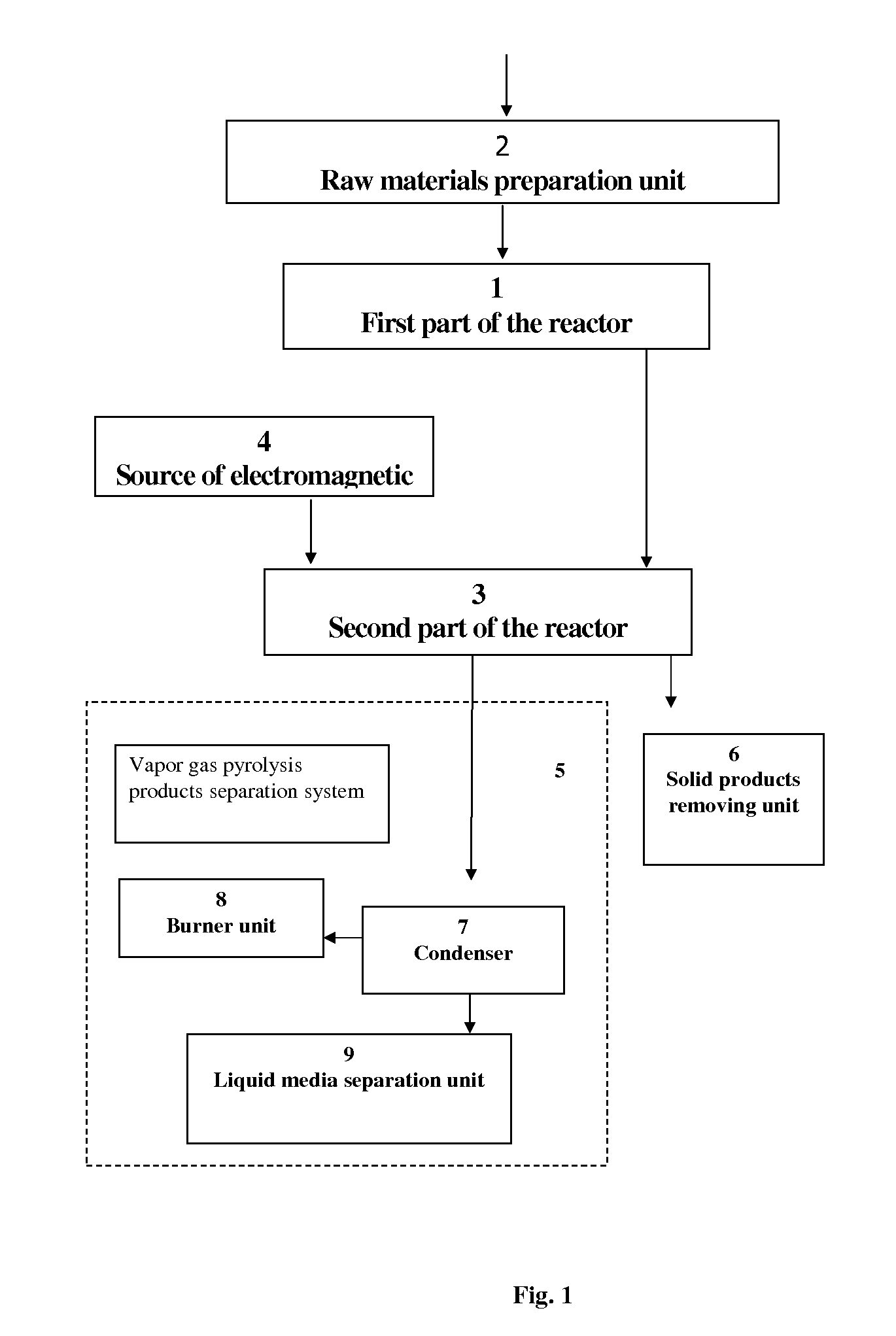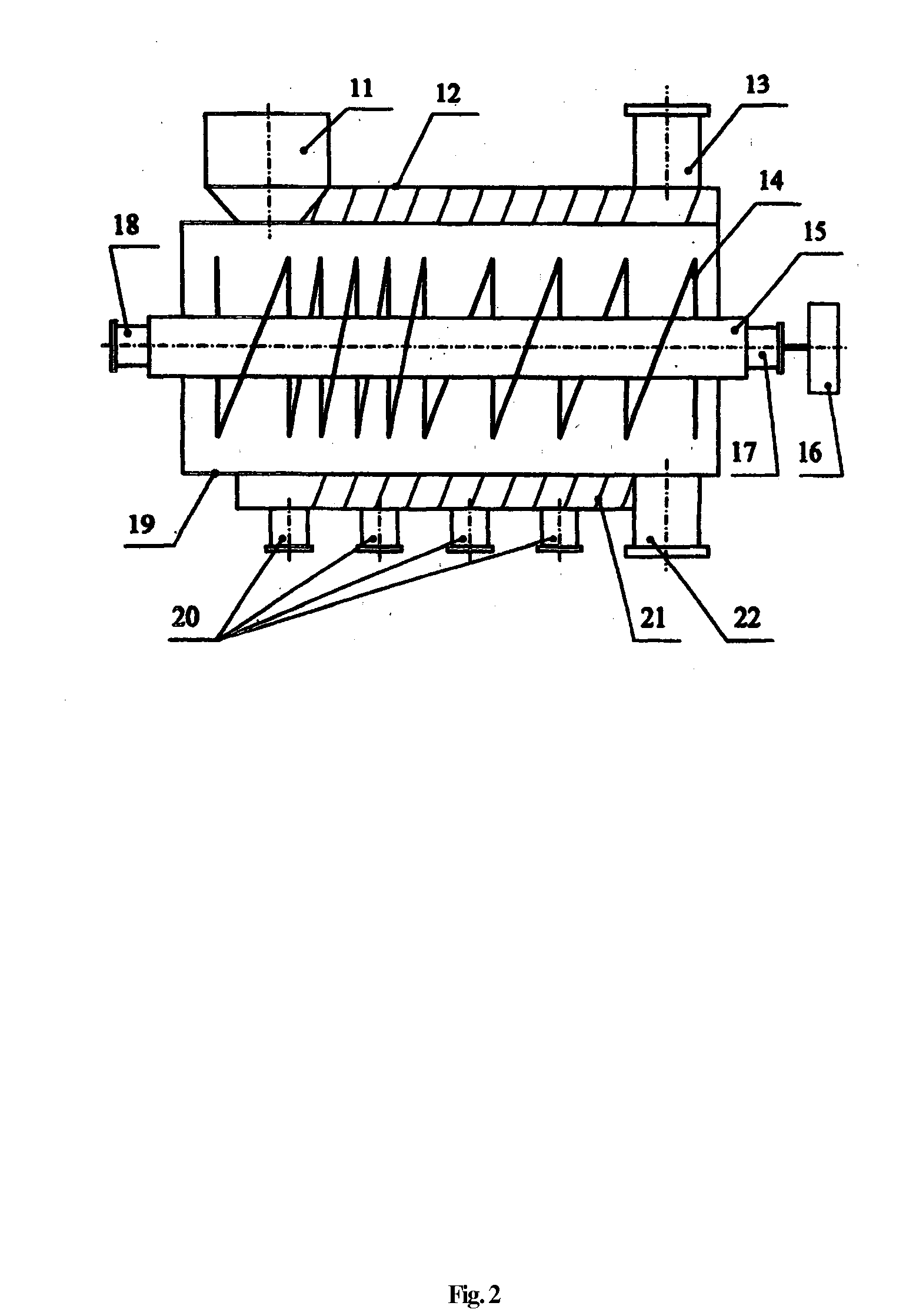Method and Device for Processing Domestic and Industrial Organic Waste
a domestic and industrial organic waste technology, applied in the field of domestic and industrial organic waste processing, can solve the problems of low efficiency of the process of pyrolysis, insufficient safety and technology effectiveness of the process, and low efficiency of the process of obtaining and using pyrolysis
- Summary
- Abstract
- Description
- Claims
- Application Information
AI Technical Summary
Benefits of technology
Problems solved by technology
Method used
Image
Examples
example 1
[0072]Recycling of meat and bone waste in the amount of 1000 kg with moisture content of 50 to 70% was performed under optimum operational conditions.
[0073]The first stage of pyrolysis was performed at temperatures of 250-300° C., while the second stage of pyrolysis was conducted at 750-850° C., with an excess pressure of 0.3 atm, a frequency of periodic electromagnetic action of 30 Hz, and a breakdown voltage of 30 kV.
[0074]A sodium alkali catalyst in a volume of 4% of waste was used.
[0075]Processing yielded the following results:
[0076]Solid product (coal dust, bulk density of 300-400 kg / m3, with a particle size of five microns and higher) 10%-13% of the waste mass.
[0077]10%-15% gaseous fuel product (about 20 components, including about 60% of hydrocarbons C1-C4)
[0078]About 20%-30% (depending on initial moisture content and waste composition) liquid containing hydrocarbons C6-C25 (70% of which was hydrocarbons C8-C16) and other organic compounds, including heterocyclic components w...
example 2
[0079]Recycling of meat and bone waste in the amount of 1000 kg, with moisture content of 50 to 70%. The first stage of pyrolysis was performed at temperatures of 200-250° C., while the second stage of pyrolysis was performed at 400-450° C., with an excess pressure of 0.15 atm, a frequency of periodic electromagnetic effect of 3 Hz, and breakdown voltage of 10 kV.
[0080]A sodium alkali catalyst in a volume of 2% of waste was used. Processing yielded the following results:
[0081]Solid product (coal dust, bulk density of 800-900 kg / m3, with a particle size of five microns and higher) 15-18% of the waste mass.
[0082]5-7% gaseous fuel product (about 20 components, including about 45% of hydrocarbons C1-C6)
[0083]About 25%-35% (depending on initial moisture content and waste composition) liquid containing hydrocarbons C8-C26 and other organic compounds (70% of which was hydrocarbons C10-C20), including heterocyclic components with a maximum of 22 carbon atoms.
example 3
[0084]Recycling of meat and bone waste in the amount of 1000 kg, with moisture content of 50 to 70%. The first stage of pyrolysis was performed at a temperature of 300° C., while the second stage of pyrolysis was performed at 1100-1200° C., with an excess pressure of 0.7 atm, a frequency of periodic electromagnetic action of 400 Hz, and a breakdown voltage of 50 kV.
[0085]A sodium alkali catalyst in a volume of 10% of waste was used.
[0086]Processing yielded the following results:
[0087]Solid product (coal dust, bulk density of 200-300 kg / m3, with a particle size of five microns and higher) 9-11% of the waste mass.
[0088]13-17% gaseous fuel product (about 20 components, including about 55% of hydrocarbons C1-C3)
[0089]20-25% (depending on initial moisture content and composition of waste) liquid containing hydrocarbons C6-C20 and other organic compounds (65% of which was hydrocarbons C7-C14), including heterocyclic components with a maximum of 16 carbon atoms, and the qualitative composi...
PUM
| Property | Measurement | Unit |
|---|---|---|
| discharge frequency | aaaaa | aaaaa |
| breakdown voltage | aaaaa | aaaaa |
| temperature | aaaaa | aaaaa |
Abstract
Description
Claims
Application Information
 Login to View More
Login to View More - R&D
- Intellectual Property
- Life Sciences
- Materials
- Tech Scout
- Unparalleled Data Quality
- Higher Quality Content
- 60% Fewer Hallucinations
Browse by: Latest US Patents, China's latest patents, Technical Efficacy Thesaurus, Application Domain, Technology Topic, Popular Technical Reports.
© 2025 PatSnap. All rights reserved.Legal|Privacy policy|Modern Slavery Act Transparency Statement|Sitemap|About US| Contact US: help@patsnap.com



